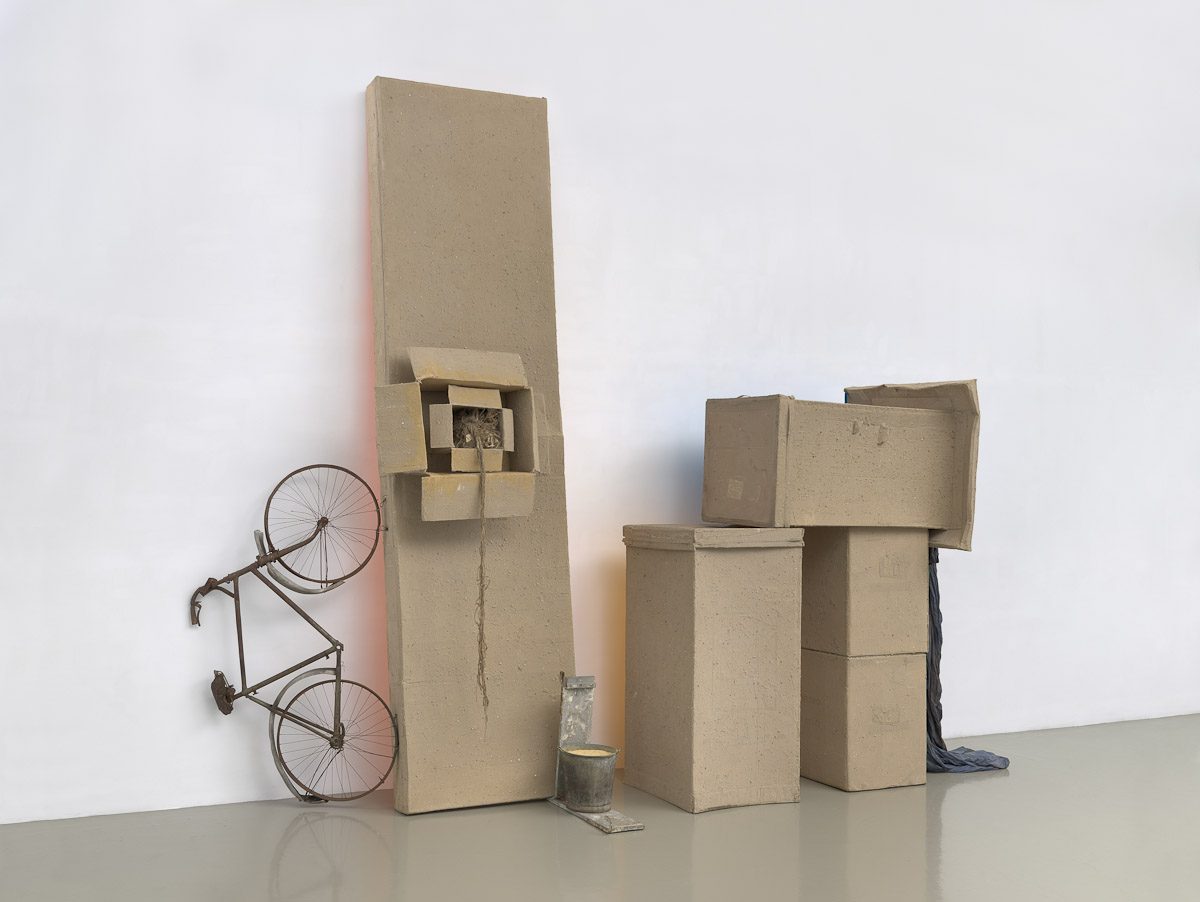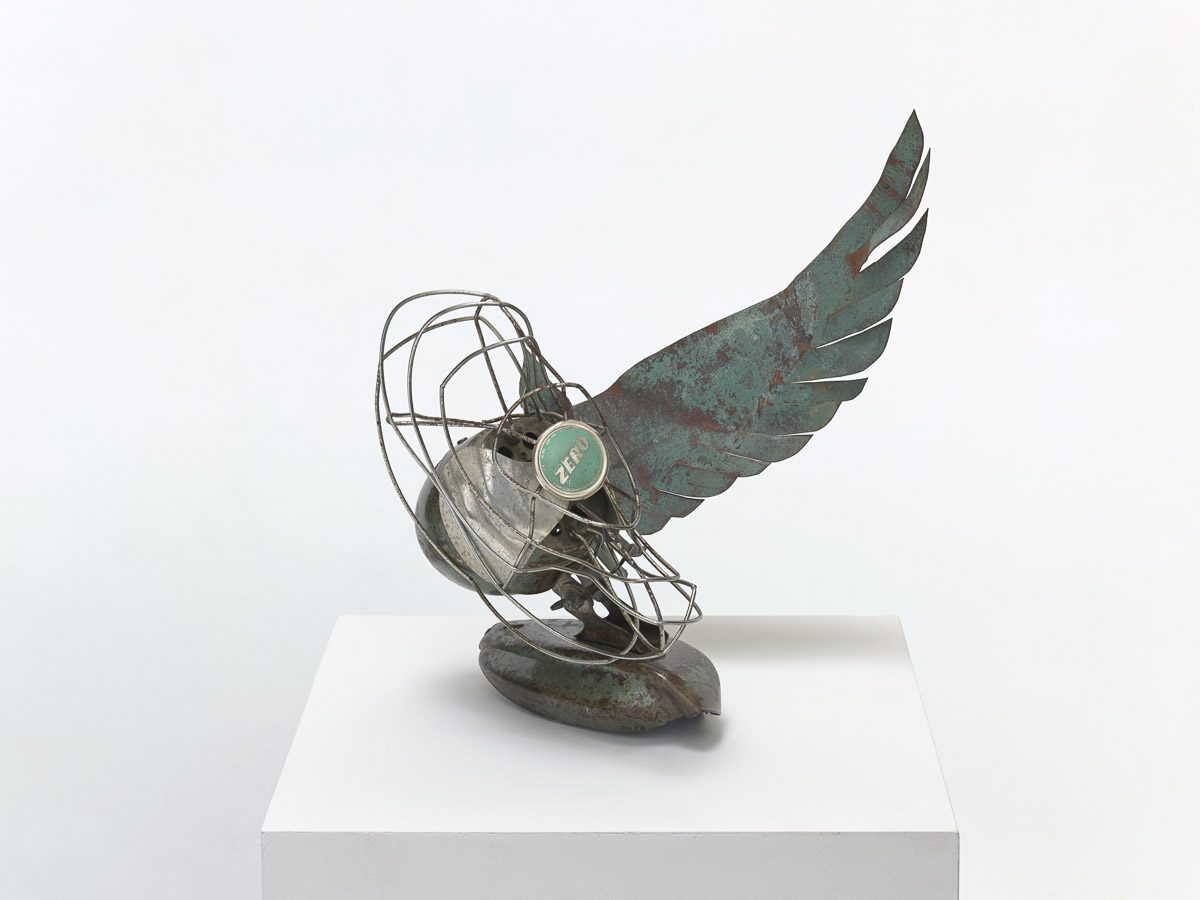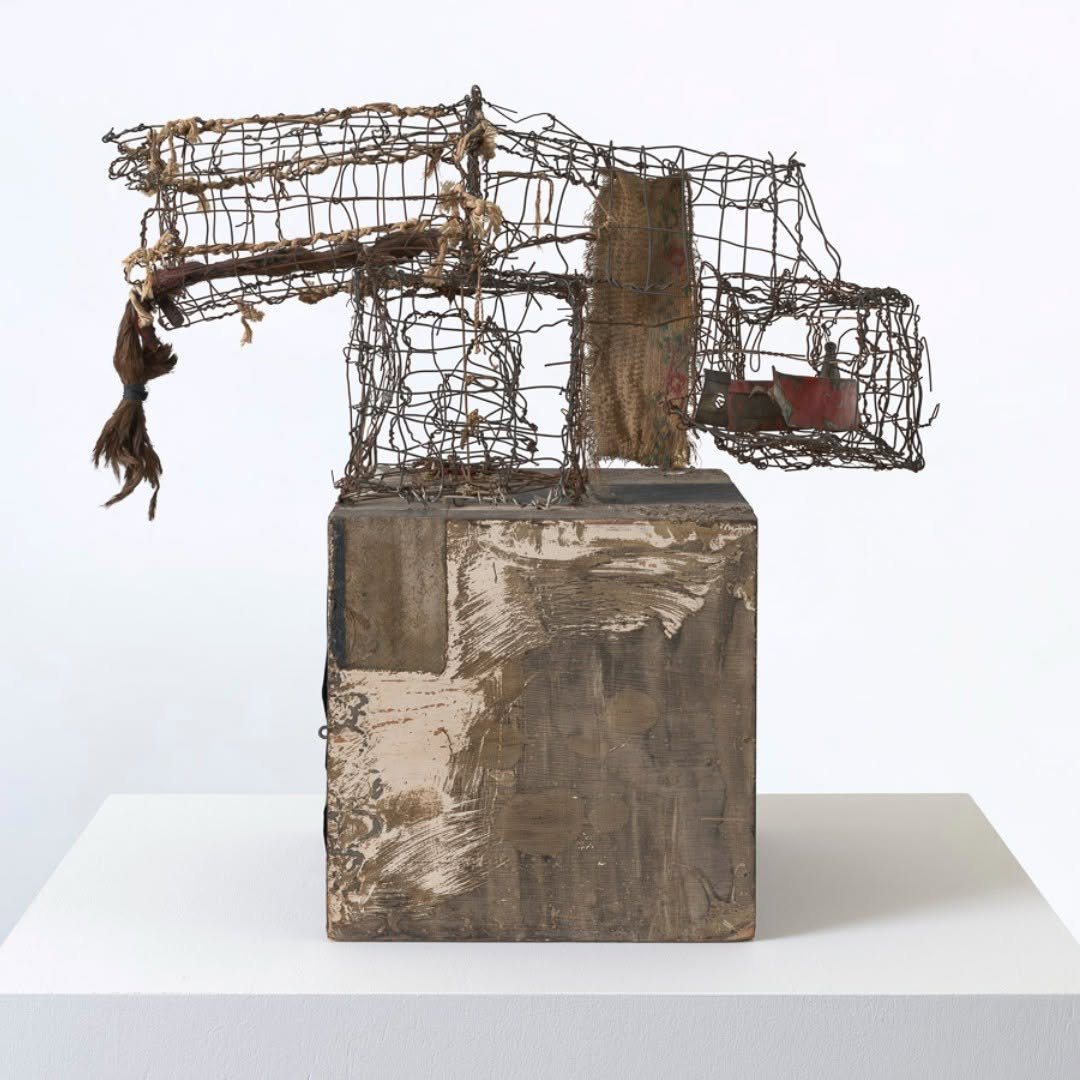ART CITIES: N.York-Robert Rauschenberg
Widely regarded as one of the most influential American artists, Robert Rauschenberg played a pivotal role in bridging Abstract Expressionism and later modern art movements through his radical fusion of materials and techniques. A leading figure of the Neo-Dada movement, his experimental methods pushed the traditional boundaries of art and paved new paths for future generations.
By Dimitris Lempesis
Photo: Gladstone Gallery Archive
Examining Robert Rauschenberg’s sculptures through the lens of scale, the exhibition “Sympathy for Abandoned Objects” showcases over 30 sculptures the 1950s through the late 1990s, that relate in size to the human body, whether floor-, pedestal-, or wall-based. Drawing from myriad media and disrupting the distinction between abstraction and empirical representation, Rauschenberg’s sculptures are rooted in his career-long dedication to artistic experimentation. Rauschenberg is renowned for blurring the line between artistic genres, painterly gesture, and three-dimensionality. The artist maintained a robust sculptural practice throughout his long and prodigious career. Underscoring the artist’s remarkable use of found and readymade materials, the works on view are assembled from industrial detritus, everyday objects, decorative items, and organic forms. They are the result of improvisatory gestures—gathering, twisting, combining, adhering, tying—that Rauschenberg described as responses to items found in his environment, “treasures” that he would bring back to his studio, seeing in them a potential for new form. Claiming a “sympathy for abandoned objects,” he created a body of strictly sculptural work that is rarely presented as such. For this exhibition, the gallery present key works from various series, including the “Scatole Personali”, “Elemental Sculptures”, “Combines”, “Kabal American Zephyrs”, “Gluts” and the “Rauschenberg Overseas Culture Interchange” in an installation designed by Selldorf Architects to reveal the continuity of his unique vocabulary within an expansive set of sculptural positions. Given Rauschenberg’s protean imagination, this exhibition also features a number of his sculptures that were not aligned with specific series and exist on their own formal terms. Key loans from institutional and private collections augment the selection of work from the Robert Rauschenberg Foundation to further argue for the artist’s keen sculptural sensibility, even if he resisted aligning himself with one medium. This exhibition traces the trajectory of Rauschenberg’s creative output as a whole, with the three-dimensional objects serving as key touchpoints in an expansive and almost uncategorizable oeuvre. exhibition histories. Born on 2610/1925 in Port Arthur, Texas, Robert Rauschenberg worked in what he called the gap between art and life. Over the course of his sixty-year career, Rauschenberg’s art embodied a spirit of experimentation with new materials and techniques. Dubbed an enfant terrible for his assemblages of urban detritus (the Combine0)s of Rauschenberg continued exploring many different mediums and technological advancements in the years following his 1970 decampment to Captiva Island in the Gulf of Mexico, off the Florida coast. Although he demurred from affiliations with any particular movement, he has been called a forerunner of essentially every postwar artistic development since Abstract Expressionism. In addition to his own artmaking practice, Rauschenberg became an advocate for artists and the creative community at large. In September 1970, he founded Change, Inc., a non-profit organization that helped artists with emergency expenses. From 1984-,91 he personally funded the Rauschenberg Overseas Culture Interchange (ROCI), traveling to ten countries outside of the United States to spark cross-cultural dialogue through art. Rauschenberg died on 12/5/2008 in his Captiva studio. His artistic legacy and his lifelong commitment to collaboration with artists, performers, writers, artisans, and engineers worldwide was recognized long before his death. His expansive artistic philosophy lives on through his highly innovative and influential work to the present day.
Photo: Robert Rauschenberg, Le Coon Glut, 1986, Assembled metal, 62 5/8 x 79 1/8 x 7 3/8 inches (159 x 201 x 18.8 cm), © Robert Rauschenberg Foundation / VAGA at Artists Rights Society (ARS), Photography by Ron Amstutz
Info: Gladstone Gallery, 530 West 21st Street, New York, NY, USA, Duration: 1/5-14/6/2025, Days & Hours: Tue-Sat 10:00-18:00, www.gladstonegallery.com/





